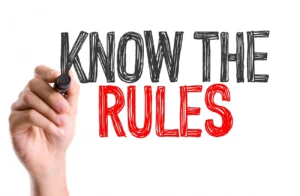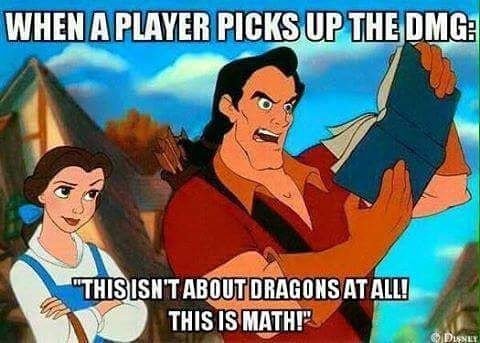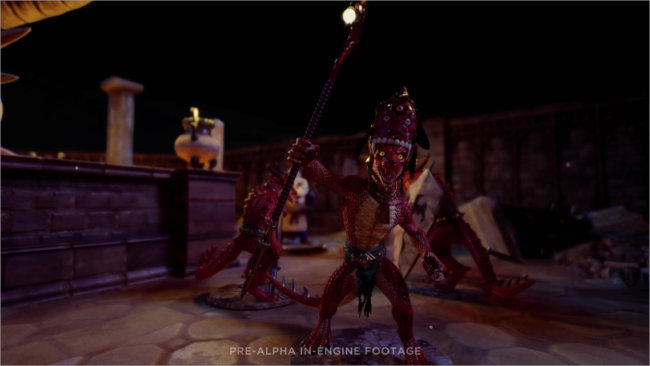So we now have the second “OneD&D” playtest doc, UA 2022 Expert Classes. Interesting stuff, both because we see what they are doing with character classes (in this case, the group of classes titled “Experts”: Bard, Ranger, Rogue, and kinda, technically, Artificer).
As with my previous UA 2022 look, I’m going to break my notes up into three categories (not exclusive):
1. Huh. Not a bad idea.
2. Ugh. That is a bad idea.
3. Yeah, this is 5.5e
Just as an overview:
- There are a lot of not-bad ideas in this UA. More importantly, there’s a lot of thoughtful reframing and stating of D&D concepts and rules from 5e that will help bring clarity to the game no matter where it goes.
- There are still some bad ideas.
- And, no, this is not a seamless backwards-compatible eternal edition of D&D. This is D&D 5.5e .
Huh. Not a Bad Idea
Class Groups: So now we’ll have Class Groups that mean more than just convenient generalizations. And that’s not a bad thing, as they actually use the idea within the rules — Feats with certain Class Groups as prerequisites, for example. It means when new Classes are introduced, they slot more easily into the rules (e.g., by knowing that Artificer is an “Expert” Class, we already know a bunch of rules that apply to it without having to write those rules out with it). And, yeah, it will also help starter groups cover all the bases.
It was an odd choice to start with the “Experts” Class Group (martials, er, “Warriors” would seem more straightforward). But, then, this lets them trot out the new Ranger, as the old one was generally considered underpowered by a lot of people.
Suggestions: I think it’s a good idea for a lot of things (e.g., Spell Lists) to be offered with suggestions as to what a given Class would most likely do with it. Especially Spell lists, I should say. Given the relative ease of swapping out a lot of those things (but even when you can’t), it reduces decision-making during character creation or leveling without actually forestalling options.
I’d recommend some guidance on Feats, too (including Attribute Bumps vs other Feat options).
Increasing Highest Level Powers: Class 20th level features are now moved to 18th Level, with new Epic Boon Feats opened up at 20th. Okay, that’s cool.
Better Bardic Inspiration: Rather than giving Bardic Inspiration to someone for 10 minutes and have them remember to use it and to do so before the GM says that a roll was a failure — the new rules suggest the Bard actively React to the failure and then give the character the extra die to roll.
This same kind of efficiency shows up in a number of places. For example, Guidance is now not a Concentration cantrip that you cast before someone makes a check, but a Reaction to cast afterward. The Bard’s Cutting Words similarly does away with the “use it before the GM announces the results” stuff, which is always a pain. This sort of thing will make these kind of bonuses easier.
Scaling on Proficiency: A number of spells and powers (e.g., again, Bardic Inspiration) use Proficiency Bonus as a modifier or a “how many times you get to use it” counter. That means the abilities will improve over time much more quickly than an Attribute modifier, though they may start out at lower numbers.
Use of Spells instead of Special Abilities: The Bard’s Song of Rest(oration) now provides access to specific healing spells (which trend upward, going from Healing Word up to Greater Restoration) that are considered permanently prepared, rather than specialized mechanics that have to be spelled out for the reader. This shows up in a number of places, and it’s a nice way of using an established effect (a spell) rather than making shit up.
Rangers and Hunter’s Mark: Favored Enemy was kind of weird and weak, much more focused on information than actual action. It helped you track, know stuff about, and understand the language of a given monster type. Now it gives the Ranger Hunter’s Mark for a specific enemy, always prepped, and without need of Concentrating. Nice, esp. when used by the Hunter subclass (which restores the lore component).
Clearer Writing: Even when rules aren’t changing, the UA present them in language that is clearer and easier to parse. There is also more Capitalization of Things to make them easier to see and key off of.
Expanded Actions: The new rules add additional Actions to the 5e list, drawing that whole Actions thing out of just being combat-focused, but providing a stronger framework. Some of these Actions won’t necessarily take place in the realm of an Initiative-based conflict (though they could),m but that’s all right.
That includes carving out “Actions” for Influence, Search, Study, even Jumping. They’re not all good, but I think it’s a cleaner way to present some of these rules.
Conditional Love: 5e had a pretty good framework for Conditions, and the new rules build on that, giving additional considerations as to how different Conditions might affect you, e.g., Incapacitation clearly breaking Concentration and impacting Initiative, which is especially important when you remember that when you Sleep you are Incapacitated. Similarly, the new Hidden condition clarifies a bunch of sealth-related things. The Slowed condition consolidates multiple places where the effect previously occurred to a single point of explanation. Overall, I applaud the effort.
Thief’s Reflexes: Rather than 17th Level Thieves adding an additional turn on the first round (which makes the whole Initiative backup even worse), 14th Level Thieves get an additional Bonus Action from the Cunning Action list.
Thieves and Magic: Rather than the vaguely-worded Use Magic Device abilities for Thieves at 13, now at there are a fixed set of bonus abilities given at 10 that make very little narrative sense, but are quite nice. (It also includes a Scrolls aspect which points to some clarification coming there.)
Double-Weapon Fighting Changes: The current rules on fighting with a weapon in each hand — which is a very cool thing that everyone wants to do sooner or later — are pretty complex, between the dual-handed and double-weapon and the etc. The pivot to having it all be enabled by using a Light weapon (or two) make it all work a bit more cleanly now, with or without the Feats that assist it. At the very least, giving it some thought is a positive in my book.
Nice bonus to the players, too, to have the second attack be part of the same Attack action, rather than a Bonus Action. I worry that’s going to create some higher-level imbalance, but it’s cool.
Searching and Studying: This is an effort to untangle the “Perception” vs “Investigation” perennial confusion. Since that baffles a lot of people (including some GMs), doing so is a good thing, especially as they formally bundle Insight / Medicine / Perception / Survival as “Search” actions and Arcana / History / Investigation / Nature / Religion as the “Study” items, pointing out their conceptual similarities and providing better guidance as to how to use them. Good.
Drawing and Stowing Weapons: This is now called out as part of the Attack action, rather than casually in the generic Use an Object one. That aspect, at least, is good. (See below.)
It’s Magic!: Rather than the Cast a Spell action, we now have a Magic action that includes using magic items. Nice added clarity there.
Barkskin!: This was one of those spells that should have been better, and now is. Rather than merely giving you a basement AC of 16, it now gives Temporary HP (which cale) and is a Bonus Action, making it more likely someone will cast it in combat. Still a Concentration spell, though, which kinda sucks.
Inspiration Exploration!: I can’t take credit here (because according to the videos, this UA was built before they had closed and started reviewing the results of the first one), but I’m tickled to see that one of the ideas they are playing with for Inspiration is giving it on a Nat 1 rather than a Nat 20. I think it would take the sting out of a flat failure (“Well, at least I got Inspiration!”), and is perfectly RPish.
Also, when you receive Inspiration (or “Heroic Inspiration,” maybe to distinguish it from the Bardic type), you can, if you already have a point in it (still the max) pass it on to another player.
Not much Help: The new rules propose only allowing Help on an Skill check if you have Proficiency in the Skill in question. I.e., the Barbarian can’t offer the Rogue Help in picking a lock if they don’t have Proficiency in that skill as well. That’s net a restriction, but it’s a logical one. I might house-rule it to allow someone to convince me that how they are Helping.
Hiding and Hidden: Without parsing things here too carefully, it looks like they are trying to clarify how and when the Hide action works, and what the Hidden condition does for you. I don’t see any significant difference per se, just clarification, which is awesome.
Influence Actions: This was previously optional RP-related stuff in the DMG, but now it’s getting PHB treatment, which I think is net-net good. A lot of these sorts of CHArisma-based things (Deception, Intimidation, Persuasion, and, nice, Animal Handling) can and should be done through roleplay, usually, but illuminating mechanics for them is a good thing, too.
That said, some tuning is called for. As written, the rules use a flat DC regardless of whether you are talking to Wembly the Aggravated Kobold, or DreadLord EdgeBlack the Master of Demons; it draws a distinction in how Hostile the Hostile Attitude is, but if DreadLord EdgeBlack is willing to humor himself listening to your request, you might stand a shot. GMs need to keep hard control over this mechanic.
Jumping Jehozaphat: The new Jumping rules seem clearer and less fiddly than the old ones. That’s good. (But see below.)
Resting Revision: It’s now explicitly called out that the first hour of a Long Rest, if then interrupted, still counts as a Short Rest. That only makes sense.
Rituals: You don’t need a special feature on your character class to cast a Ritual spell. That’s a nice decomplication.
Ugh. That Is a Bad Idea
Poof! I’m Invisible: The current hiding-related things for Rangers in 5e are a bit goofy — Hide in Plain Sight has a bunch of specialized rules with practical restrictions related to them, and Vanish is set at 14th level when it should be a lot lower. But the replacement in the new rules of a one-turn Invisible spell for hand-waving magical reasons seems silly. I like the use of spells instead of customized powers, but this is less useful than the existing rules (one turn?) and a lot less colorful.
Feats and Prerequisites: One of the things that 5e did was really flatten out Feats. After the 3e/3.5e feat trees (I don’t recall how 4e ran them), this was a refreshing way to get cool stuff, character-concept stuff, early days. The introduction of additional pre-reqs — levels, Class Groups, etc. — is starting to complicate that some. I would want to actually see how that works out, and it does have the advantage of allowing more powerful feats for higher level characters, but I’m still a bit concerned. Maybe less of a bad idea than an idea I am wary of.
Drawing and Stowing Weapons: I think one of the biggest heartburns people have in play is juggling weapons, and the way the 5e and the new rules still work, you can’t trade off easily within a turn without dropping something on the ground. I’m sure there are all sorts of good verisimilitude reasons for this, but from a player/GM aspect, it’s Not Fun. (I remain about this close to house-ruling about this.)
Movement Muddling: So there are more explicit rules for different Speed types (Climb Speed, Fly Speed, etc.). That’s cool, but rather than being able to switch out between them on a given turn like you can now, you can now only use one speed type during a given Move. That seems like it will be potentially awkward and limiting, though I’m not sure I can articulate a reason for that off the top of my head. It may be, though, a reason why Dash now doesn’t increase your Speed, it gives you a second Move.
Also, Jumping is now an Action instead of part of Movement. That seems restrictive. If I’m charging that ogre and jumping over a five foot gap along the way, it shouldn’t interfere with my laying some some swordwork on his head.
Exhaustion: Now more clearly a Condition (it was previously in a sidebar of the Conditions appendix in the PHB), which is good, it is given 10 levels rather than 5 (making it much less of a threat, given the mechanics of when it’s imposed), and basically starts subtracting the level from your D20 rolls and the Save DCs on spells you throw. That’s conceptually easier than the different effects in the current rules, but feels, maybe, a bit too smooth (and there’s no movement reduction, which doesn’t seem quite right). Maybe okay, but could use some tuning.
Resting: Long Rests, it is suggested, restore all your Hit Dice, rather than half of them. Also, any reduced Ability Scores are returned to normal. Both of those seem over-powered. This is “balanced” by still canceling out any Long Rest that is interrupted by combat, which gives the GM too many opportunities to screw around with the characters. Blah.
But, Yeah, This is 5.5E
WotC continues to insist that this is all basically the current D&D (5th Edition), but better, and that everything is backwards compatible, and so “editions” are out, and that people can still use their 5e stuff, but that isn’t a 5th Edition PHB it’s the 2014 PHB, and this isn’t a playtest 5.5e, we’re all playing OneD&D now.
Except this is patently untrue.
Okay, it’s true to the extent that this new-and-improved system isn’t a scrape, but a massive remodel. The foundation, the basic structure, most of the plumbing, is all there; they’re just replacing most of the walls and flooring and appliances with bigger, brighter, better bits.
But, let’s be real. You don’t remodel your house and put all the old furniture back in place. People with Rangers built with PHB 2014 will not want to play them as built, with the old rules. They just won’t, esp. if it’s in a shiny new campaign. And GMs probably won’t want them to, if it means one more rulebook to consult against.
And, in fact, they shouldn’t still use the old rules. New material will be written with the assumption that Rangers have Hunter’s Mark and this and that and the other thing. And it should be written that way.
Similarly, the new Feats structure only works one way or the other. Spells like Barkskin and Guidance (let alone others) are one or the other. Mixing and matching characters in an existing campaign, or bringing old characters into a new “OneD&D” game, simply won’t work.
That implies that people will update/rebuild those characters for 5.5 OneD&D. Character sheet designs will need to be changed / reprogrammed. Old modules will need errata for them to reflect that NPCs and various other challenges require updating, etc.
I get that WotC doesn’t want to scare people off by calling it a new edition. A new edition means learning new rules, new concepts, and forking over for new books. But, fergoshsakes, they’re going to be selling everyone new books in 2024 anyway, so what the heck? And in another 5-10 years, they’ll do it again.
(An interesting side note here is that the Artificer is considered an Expert class, but isn’t included in this write-up because they are only focusing on PHB 2014 material, and ignoring expansions in later books like Tasha’s and Xanathar’s. That both does and doesn’t make sense, but it makes me wonder what the final strategy is here: will the new OneD&D PHB include revisions of all the previous material? Or just the core three books? How “aged” does material have to be? Or will we then get updated TCE and XGE books, too (ch-ching)?)
(The question will always be “How does Hasbro think it can most maximize its profits?”)
Call it 5.5e and be done with it, people.








